Spanish designer Lucas Muñoz has created a showroom for furniture brand Sancal in a former office building in Madrid, reusing all materials from the original space that could not be recycled.
CoLab is located on the fourth floor of the O’Donnell 34 building, which was designed in 1966 by architect Antonio Lamela and is considered to be Madrid’s first modern office building.
Sancal and Muñoz set out to transform the 300-square-metre space into a hybrid showroom and workspace, called CoLab, where clients can experience Sancal’s colourful and playful furniture in a setting that reflects the importance of a collective approach to design projects.
The interior, which has been shortlisted for a 2025 Dezeen Award, promotes circularity through the reuse of materials and the reassembly of existing elements, while also attempting to match the per-metre cost of an equivalent standard office refurbishment.
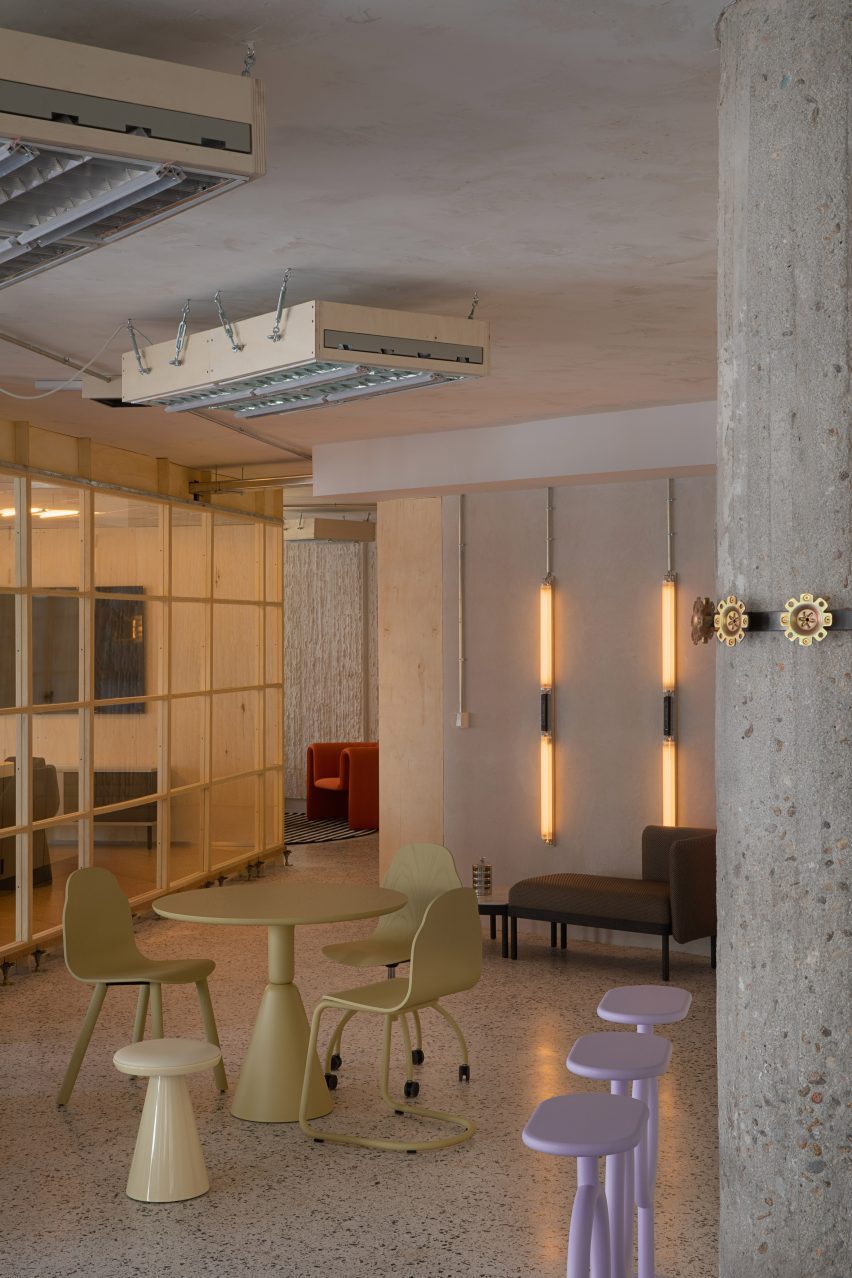
Basing their approach on the motto “what can’t be recycled remains”, Muñoz and his team carefully dismantled the existing office, which was refurbished in the 1990s to house a notary firm.
Non-structural partitions were removed, creating a more modern, open floor plan. Technical solutions like floating floors and false ceilings were also stripped away to reveal the original terrazzo floors and concrete columns, which the team restored.
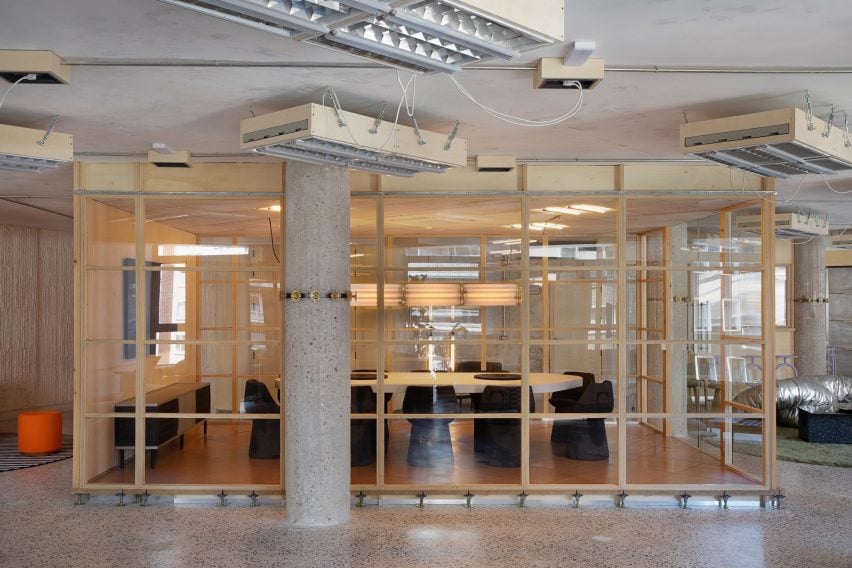
“The office’s modular material approach allowed us to dismantle and re-consider each piece as a potential intervention element,” Muñoz told Dezeen.
“Very little demolition was required, meaning recovered pieces could be evaluated according to their impact to decide if they must stay or if they could be recycled.”
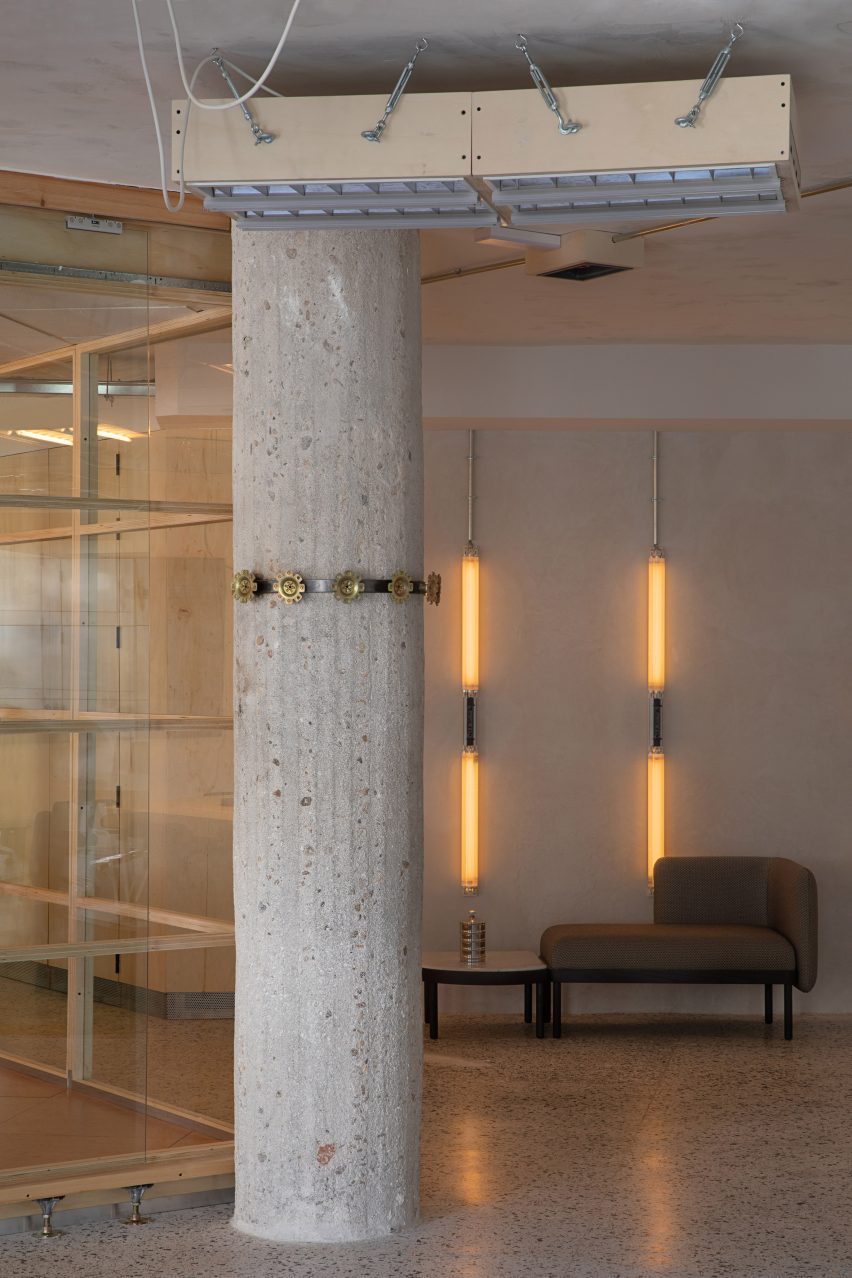
Salvaged materials were repurposed as part of a workshop-style project that lasted several months and involved architects, designers, artisans and socially driven organisations.
Construction company Zimenta helped Muñoz’s team find new uses for the materials, including composite flooring and ceiling systems that would otherwise have been scrapped.
The ceiling panels were broken down into smaller pieces using a custom-made steel comb and then combined with plaster to create a textured cladding used for the wall of the entrance area.
The aluminium undersides of existing flooring plates were polished and applied to walls so their reflective surfaces amplify daylight entering through nearby windows.
Non-profit Asociación Norte Joven, which supports young people at risk of social exclusion, was responsible for transforming the fluorescent light housings into LED fixtures featuring bespoke wooden frames.
New walls required for the toilets were created by cutting existing masonry walls loose from the floor and ceiling, then setting them on wheels and repositioning them in a way that produced no waste.
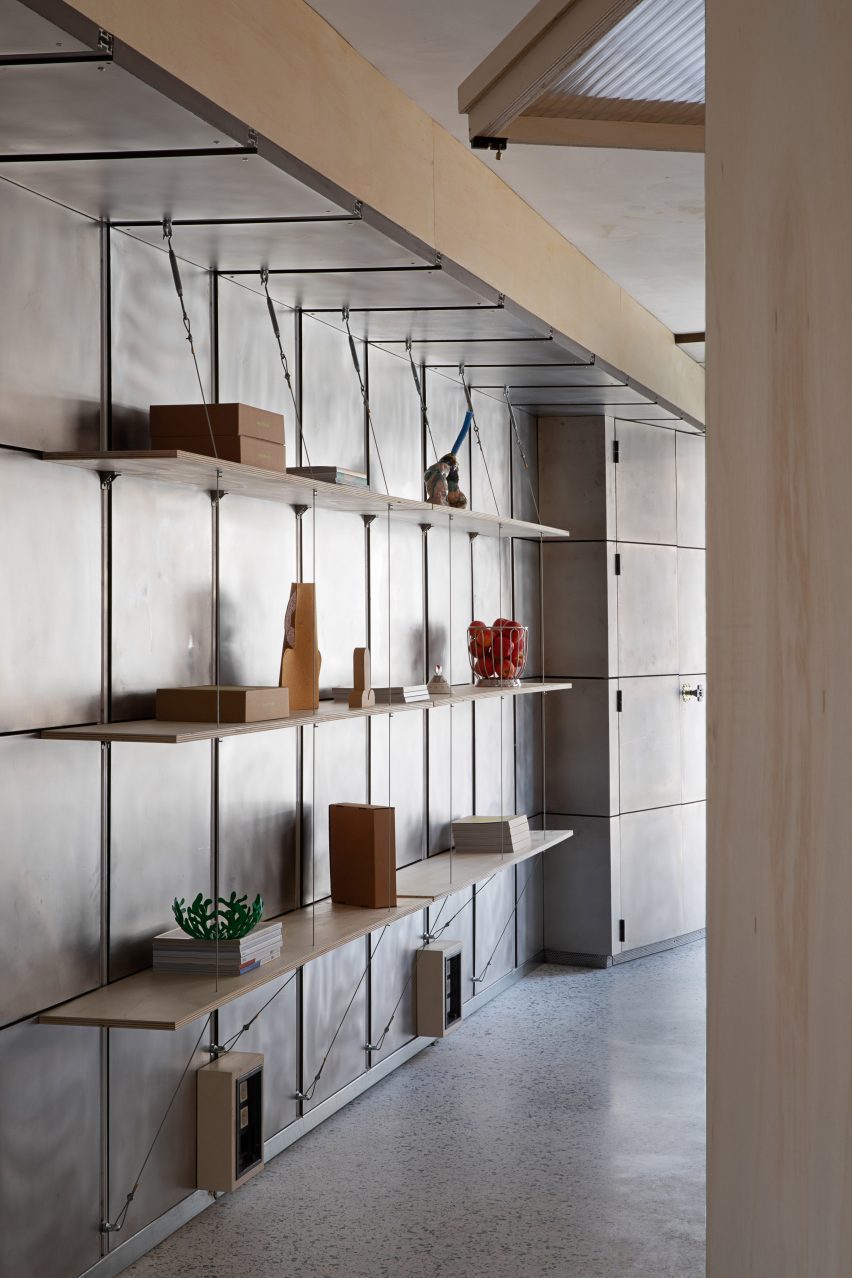
Other examples of material reuse include repurposing aluminium from existing partitions as shelving and transforming steel pedestals into coat hooks and handles.
One of the most challenging things about this approach was figuring out what to do with materials in the lag time between their demolition and repurposing, Muñoz explained
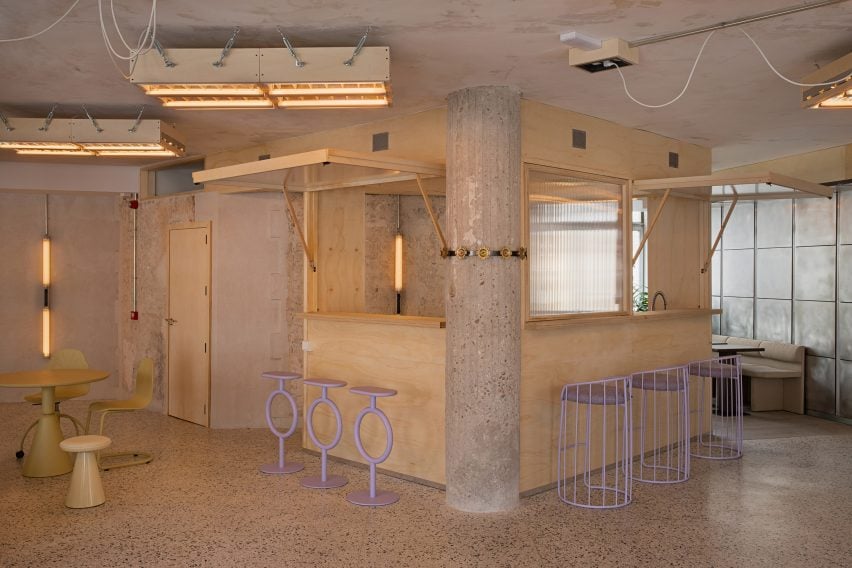
“The biggest lesson from the project is that transforming a construction site into a material laboratory for in-situ transformation implies a high level of space organisation and process scheduling,” he said.
“This is very uncommon, since the normal process is that old materials leave and new ones arrive. In our experimental approach, nothing leaves.”
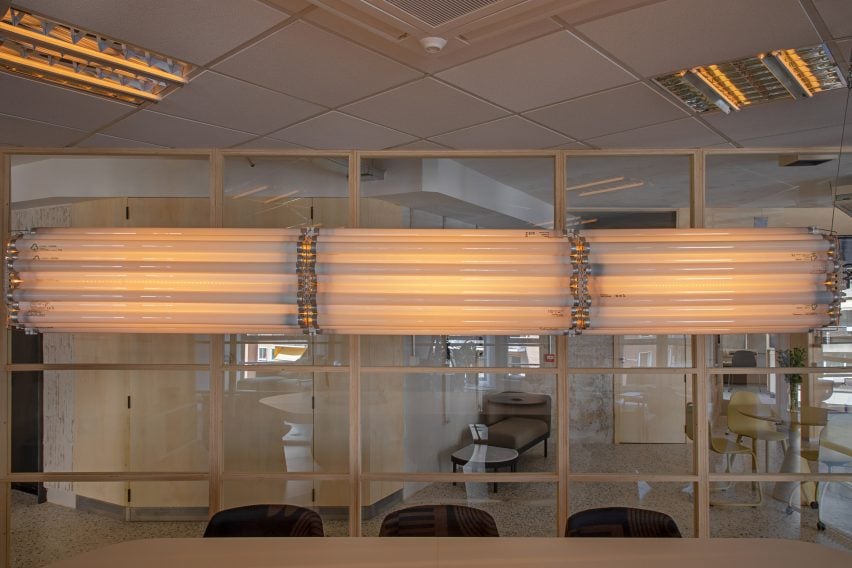
Muñoz operates his multidisciplinary studio from Madrid, employing a hands-on approach to his exploration of functionality and materiality in objects and spaces.
His previous projects include a restaurant interior created almost entirely using upcycled construction waste and a sculptural chair made from repurposed ventilation pipes.
The photography is by Asier Rua.
→ Continue reading at Dezeen
